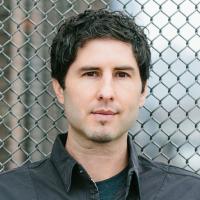Award-winning author Matt de la Peña talks about the complex layers of identity that he likes to navigate in his novels and how his experiences have informed his writing about those themes in books like We Were Here.
This video appears in:
Transcript
In my Young Adult books, I love to work with mixed-race kids because it’s often assumed that based on how somebody looks they’re going to use a certain language, or have a certain set of problems. And so I hope that I can kind of complicate those kind of assumptions in my Young Adult books.
What I love about novels is that you can really get into the nuance because you have more space to work with. So, you know, a book like, “We Were Here,” this is a good example of this, where all the other characters called my main character Mexico. He’s a mixed race kid, he’s never been to Mexico. And he’s so, he feels so complicated, like it’s such a complicated set of feelings he has about being called Mexico.
And at one point in the story he’s actually standing at the border looking into Mexico, wanting to escape what he’s done in America. And he has this epiphany that, you know what? I don’t deserve to go to Mexico yet. I need to go there once I’ve cleaned things up in America and then explore that part of who I am.
So I think the mixed race identity is so fascinating. It’s something that we never talked about when I was a kid. Nobody wanted to talk about that. They would just kind of like not mention it, not really own it. Whereas today I think more and more kids are mixed race and so more and more kids are open about it and talking about it.
My own kids are mixed. They have Mexican, White, and Asian. And so it’s just interesting to see how they’re going to forge their identity. So yeah I think, I remember when I was playing college basketball. There was this one section of fans in our arena. And they would always hold up signs for me. And we called it the De La Peña Zone.
And you know I wasn’t even like a star on the team or anything. But they, there was – it was a Mexican community that would go up there and they were so happy that there was a Mexican player on this team they rooted for. And so they would hold up signs. And one night on fan appreciation day, all my teammates were like, you go to go up there, you go to go talk to them. And I was like, yeah, let’s – I go to go up there.
So I went up to the top and they were sitting near the top, behind the basket. And I went up to them and they started, you know, all talking at me at once and speaking very fast Spanish. And I remember I had to be like, “Oh, no, no entiendo.” So I felt like I was slightly letting them down because I wasn’t fluent in Spanish. But what happened was so beautiful. They just – they stopped using words and just pulled me into a hug and they just like sort of hugged me. And I’ll just never forget that experience. And it sort of comes out, in some ways, in my Young Adult novels, that sort of complexity about being mixed.
